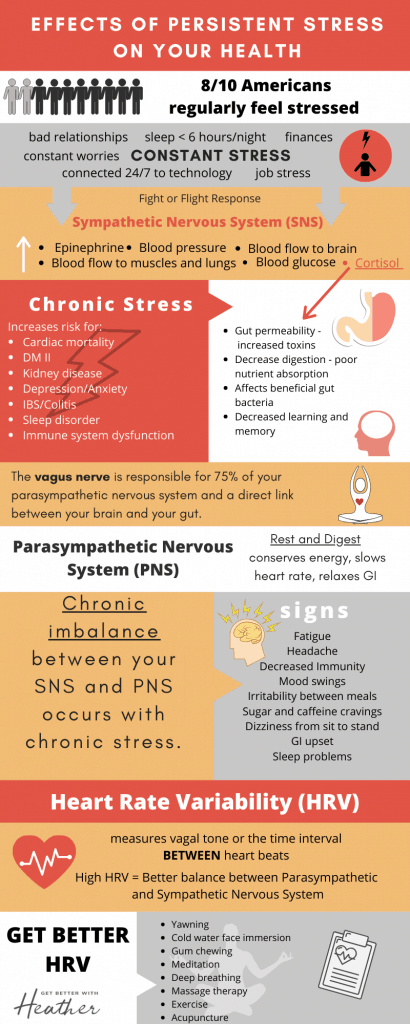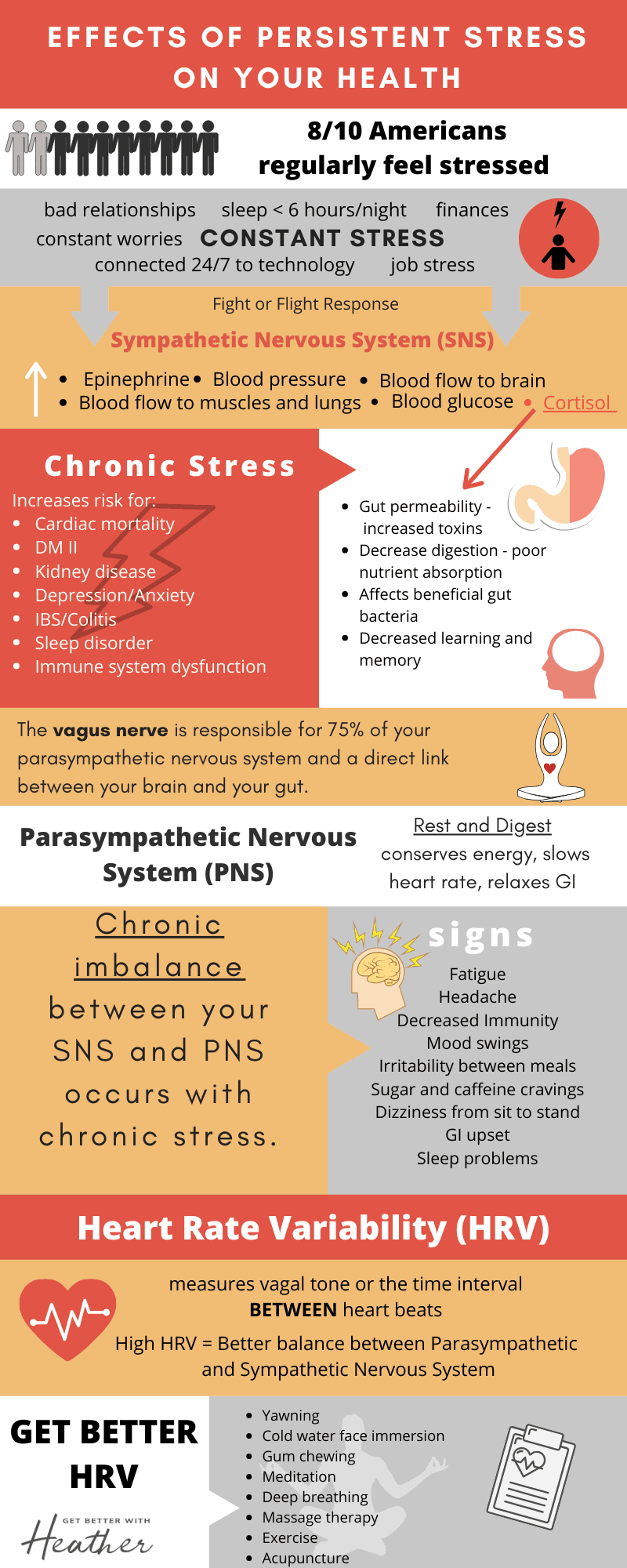This site contains affiliate links. Click here to read my disclosure policy.
For many of us, we walk around worried and stressed without even noticing. We may be upset about a comment from our boss at work, thinking about being yelled at by an unhappy customer or fuming that someone made a nasty comment on our facebook page.
Living in a connected society and I do not mean “connected” in the traditional sense, but connected 24-7 to our phones and technology IS stressful.
We rarely have free-time. Quiet time to reflect, enjoy the moment, breathe and decompress.
What is problematic is that this way of being is constant for many of us. We live in the hustle and bustle of everyday life. It is fast and sometimes unforgiving. We often do not have time to really sit and relax and spend time connecting deeply with others or with nature. Making it much worse is the fact that many of us do not even get the optimal amount of sleep. Sleep is a time when our body repairs and rejuvenates.
What this spells out is CHRONIC STRESS. A type of stress that is detrimental to our health and longevity in a very real biological sense.
If you are anything like me, that statement will not carry its full weight until you really understand the full implications, until you actually SEE for yourself the science and WHY stress is SO important to recognize. Afterall, if you are anything like me, then stress may as well be part of your legal name!
Our bodies’ are designed to handle stress. This is adaptive and back in the hunter gatherer years, it kept us alive.
Back then, if you perceived an acute threat, your body’s autonomic nervous system mobilized a chain reaction of neural signals and hormones that would make “fight or flight” possible.This was life saving.
Your brain would signal a hormonal cascade by secreting cortisol which would then send adrenaline to your body. These hormones would boost blood pressure, blood flow to the muscles, brain and lungs and cause a surge in blood glucose to give your cells energy where it was needed. Digestion would slow.
Once the threat went away, your body’s parasympathetic nervous system mainly via the vagus nerve would ramp up and balance out a relaxation response, decreasing heart rate, blood pressure and increase the digestive functions.
That same “fight or flight” mechanism is working today, but we are no longer running from lions and tigers. We are reacting to stress at work, financial troubles, problematic relationships etc. Our brain, however, treats those threats the same way it reacted to life threatening situations.
The problem here: The stress never dissipates and we are chronically secreting high levels of cortisol.
The two systems that balance your body’s adaptive response to stress are called the parasympathetic and sympathetic nervous systems. The sympathetic nervous system (SNS) is the fight or flight, while the parasympathetic (PNS) is the rest and digest system.
What happens over time when living with chronically high cortisol?
It increases your risk for:
- Cardiac mortality (changes seen in blood vessel structure)
- Type II diabetes (chronically high blood glucose)
- Kidney disease
- Gut permeability (leaky gut) *check out my mini-course on gut health
- Immune system dysfunction
- Mood disorders
- Sleep disturbances
- Weight gain
- GI dysfunction
So, have I gotten your attention yet?
Chronic stress is serious stuff!
What is great, though, is that you can impact your PNS quite easily, manage stress and improve your health and wellbeing. First, you need to recognize the need and start making it a daily practice.
Are YOU chronically stressed?
Signs of chronic stress include:
- Fatigue
- Headaches
- Immune system issues – chronically being sick
- Sleep disturbances
- Sugar and caffeine cravings
- Irritability between meals
- Dizziness upon standing
- GI upset
- Eating to relieve fatigue
- Muscles tension, especially in the shoulders and neck
- Increased heart rate and blood pressure
- Difficulty concentrating
Being aware of how you are feeling is the FIRST step!
If this approach to detecting chronic stress and lack of resilience does not work for you, you can measure your heart rate variability for a much more scientific and concrete stress level.
Heart Rate Variability
Heart rate variability (HRV), which is described in the infographic below, measures the influence of the PNS on your body. Essentially it measure your resilience to stress. A higher HRV means that there is more variability between heart beats. Less variability means that the SNS is in charge. I use my iPhone to measure mine.
While there are no HRV “norms” at this time, keeping track of what is normal for you, can help you to see a pattern in how “stressed” you are and how well you are recovering. You may even notice a decrease in HRV after not getting a good nights’ sleep, after a particularly tough workout or right before coming down with a cold. A decrease in HRV is your body’s signal to RECOVER.
Next, you need to start directly influencing the PNS. This will better balance out the constant activity of the SNS.
Take a look at this infographic for a list of ways to reduce your stress response and strengthen your relaxation response. Consistent practice will give you the awareness and tools needed to keep chronic stress at bay and improve your health and wellbeing!!
xo Heather

This site contains affiliate links. Click here to read my disclosure policy.



0 Comments